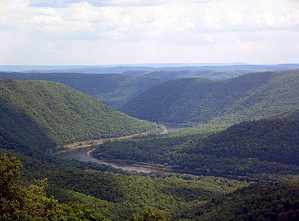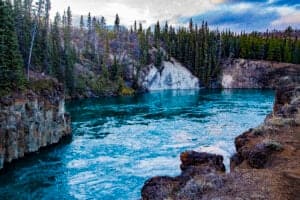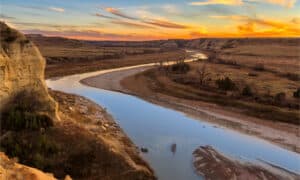A river is a natural stream of flowing water, usually freshwater, flowing towards a lake, sea, ocean, or another river. Most rivers flow year-round, while others flow seasonally or during rainy seasons. A few rivers flow into the ground and become dry without reaching another water body. Rivers are considered critical features within a landscape that carries water and nutrients to all areas. They also play a significant part in the hydrological cycle, acting as drainage channels for surface water. Besides, rivers provide habitats for numerous organisms.
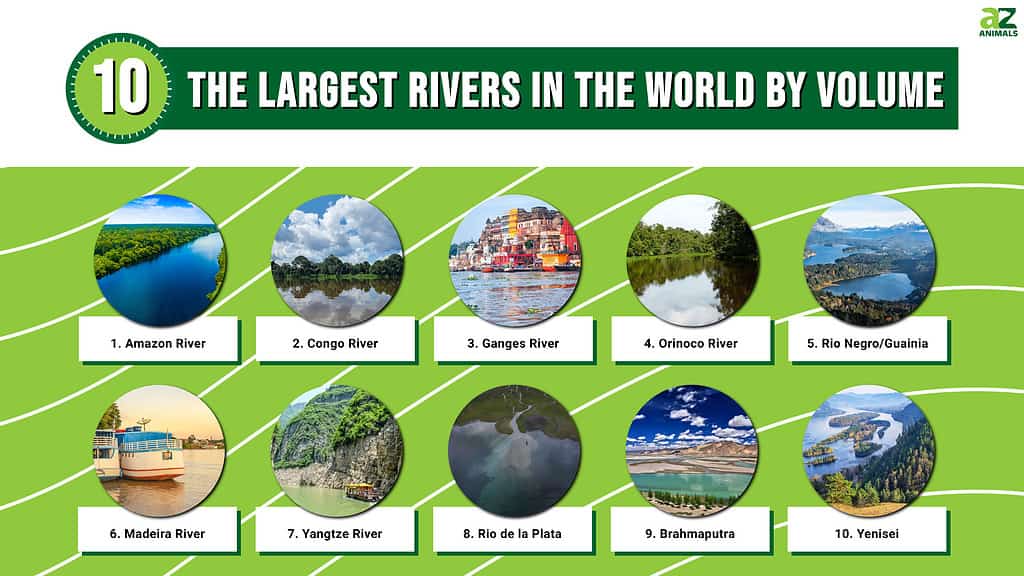
A river may be only a few miles long or span much of the continent. Despite having certain standard features, no two rivers are precisely alike. Read on to find out! In this article, we will look at a list of the largest rivers in the world by volume.
1. Amazon River
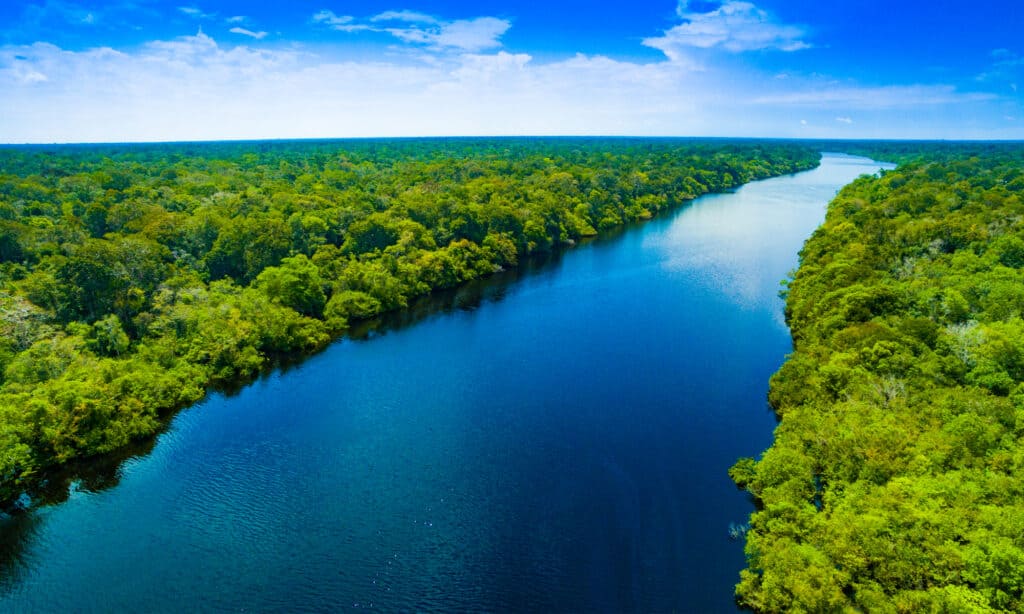
The Amazon River cuts across South America and empties into the Atlantic Ocean.
©worldclassphoto/Shutterstock.com
| Drainage area (km2) | 6,112,000 |
| Average Discharge (m³/s) | 209,000 |
| Length | 3,976 miles (6,647 km) |
| Depth | 328 feet (100 m) |
| Outflow | Atlantic Ocean |
The Amazon River is the longest disputed river. The river cuts across South America and empties into the Atlantic Ocean. Its watersheds span the countries of Bolivia, Venezuela, Brazil, Ecuador, Colombia, and Peru. With a mind-boggling average discharge of 209,000 m³/s, it sets the record as the world’s largest river by volume.
2. Congo River
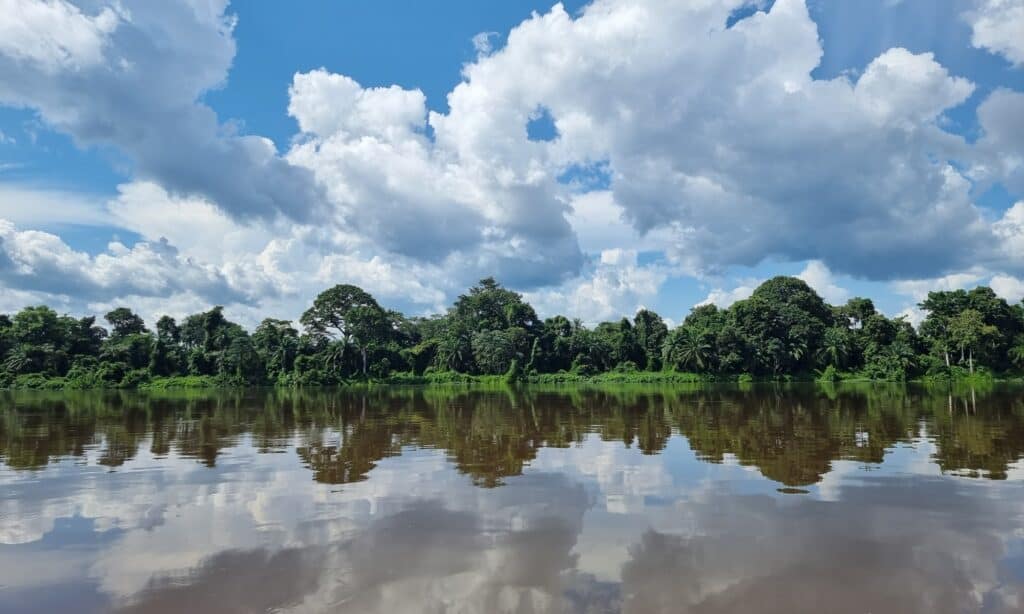
The Congo River is the second-longest river in
Africa
.
©iStock.com/Fanny Salmon
| Congo River | |
|---|---|
| Drainage area (km2) | 4,014,500 |
| Average Discharge (m³/s) | 41,000 |
| Length | 2,922 miles (4,700 km) |
| Depth | 720 feet (220 m) |
| Outflow | Atlantic Ocean |
Formerly known as the Zaire River, the Congo River is the second-longest river in Africa and the second largest river on the planet by volume. With around 720 feet, the Congo River is believed to be the world’s deepest. The Congo Basin spans six countries in West-Central Africa, including Cameroon, Equatorial Guinea, the Republic of the Congo, Gabon, the Central African Republic, and the Democratic Republic of the Congo.
3. Ganges River
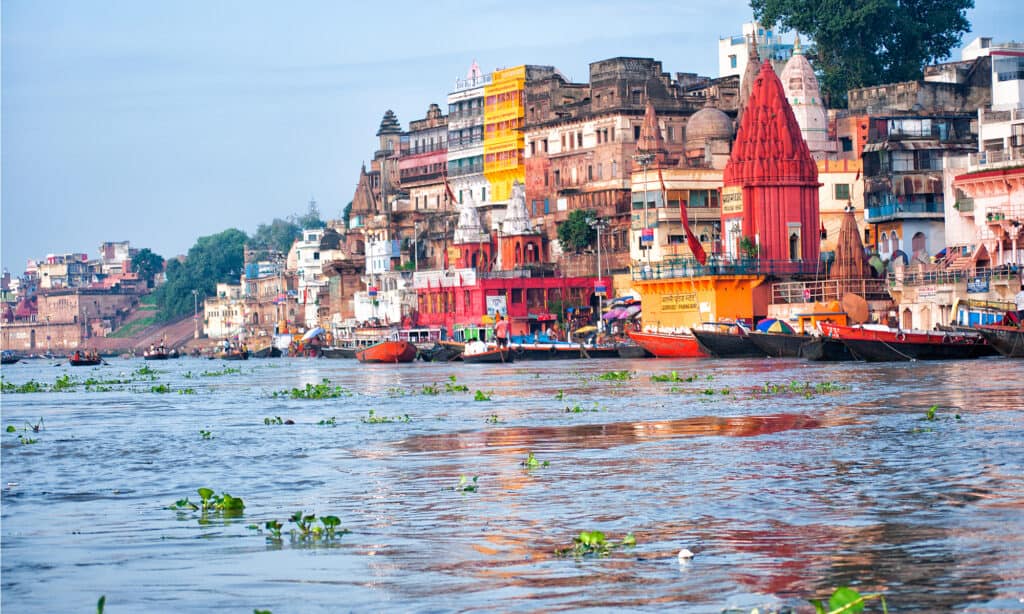
The Ganges is home to approximately 90 amphibians, 140 fish species, and several mammals and reptiles.
©Marcos del Mazo/Shutterstock.com
| Ganges River | |
|---|---|
| Drainage area (km2) | 1,731,334 |
| Average Discharge (m³/s) | 38,129 |
| Length | 1,569 miles (2,525 km) |
| Depth | 108 feet (33 m) |
| Outflow | Bay of Bengal, Indian Ocean |
The Ganges is a transboundary river in Asia that flows through India and Bangladesh. It’s the third-largest river by volume in the world. Millions of people live in the Ganges basin and depend on it for their daily needs. The river is home to approximately 90 amphibians, 140 fish species, and several mammals and reptiles. Some critically endangered species, like the South Asian river dolphin and the gharial, are found in the Ganges.
4. Orinoco
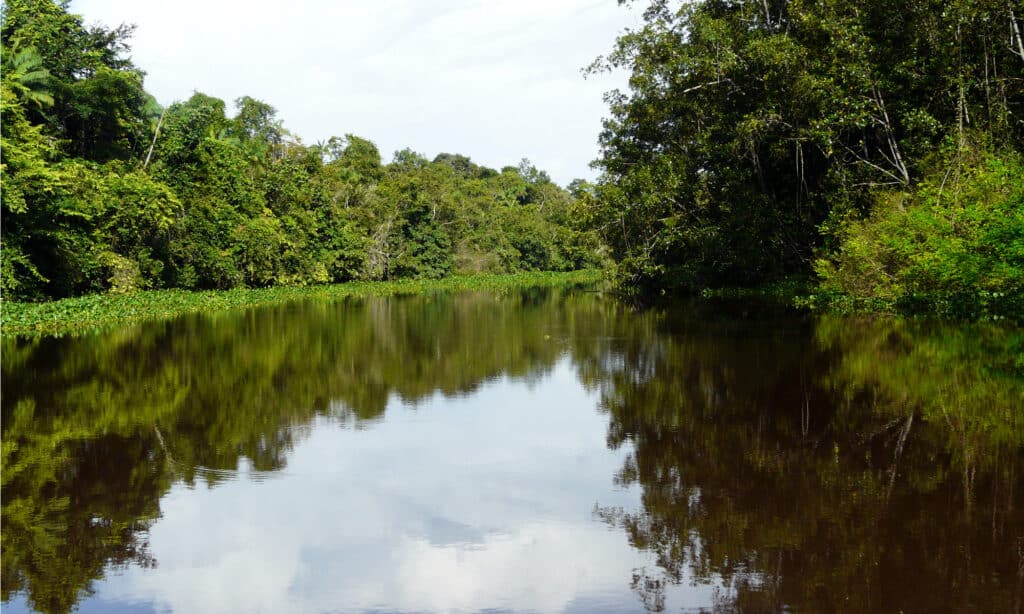
Orinoco River is the primary transportation system for interior and eastern Venezuela.
©ALFONSO CAMARERO ORIVE/Shutterstock.com
| Orinoco | |
|---|---|
| Drainage area (km2) | 989,000 |
| Average Discharge (m³/s) | 37,740 |
| Length | 1,400 miles (2,253 km) |
| Depth | 328 feet (100 m) |
| Outflow | Atlantic Ocean |
The Orinoco is among the longest rivers in South America at 1,400 miles (2,253 km) with an average discharge of 37,740 m³/s. Throughout most of its course, the Orinoco river flows across Venezuela, except for a section that forms part of the frontier between Colombia and Venezuela. The environment and wildlife within the Orinoco basin are too diverse. Together with its tributaries, the Orinoco River is the primary transportation system for interior and eastern Venezuela.
5. Rio Negro/Guainia
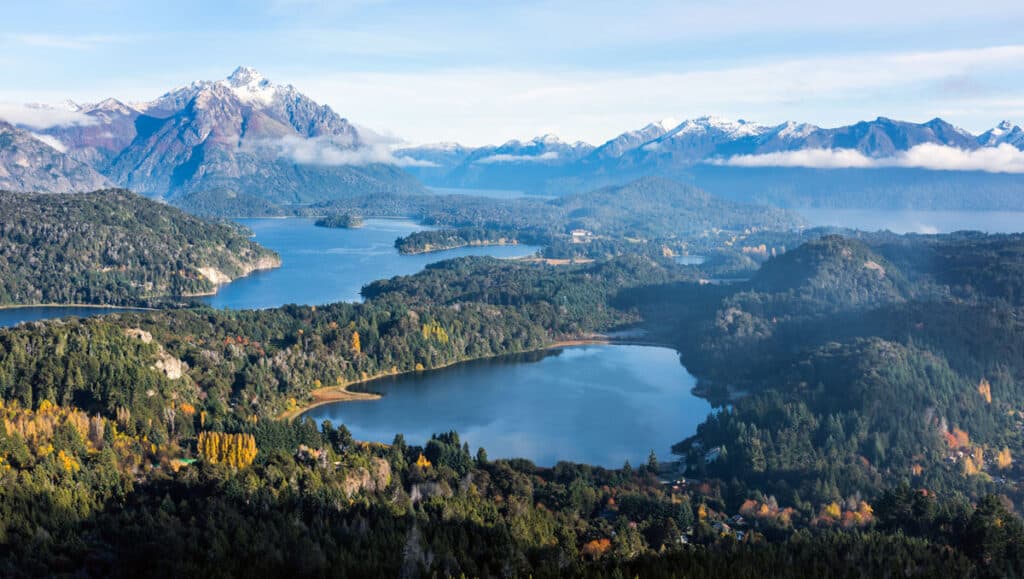
Guainia is the largest left tributary of the Amazon River.
©iStock.com/xeni4ka
| Rio Negro/Guainia | |
|---|---|
| Drainage area (km2) | 691,000 |
| Average Discharge (m³/s) | 35,943 |
| Length | 1,400 miles (2,253 km) |
| Depth | 59 feet (18 m) |
| Outflow | Amazon River |
The Rio Negro, or Guainia, is the largest left tributary of the Amazon River. It’s among the ten largest rivers in the world by volume and the largest blackwater river on the planet. The source of the river lies in Colombia, where it flows in an east-northeasterly direction across the Puinawai National Reserve. The river spans several settlements on its way, including Santa Rosa, Brujas, Cuarinuma, and Tabaquen. Colombia’s San Felipe is the river’s largest settlement.
6. Madeira River
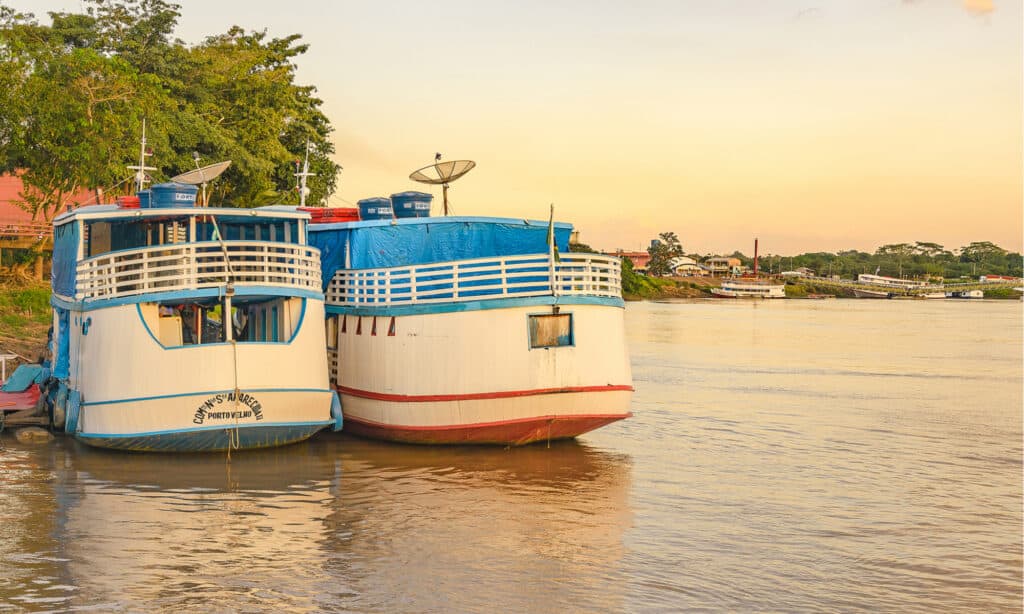
The Madeira is formed by the junction of the Beni and Mamore rivers at Villa Bella, Bolivia.
©Vinicius Bacarin/Shutterstock.com
| Madeira River | |
|---|---|
| Drainage area (km2) | 1,376,000 |
| Average Discharge (m³/s) | 31,200 |
| Length | 900 miles (1,448 km) |
| Depth | 3 feet (0.91 m) |
| Outflow | Amazon River |
The Madeira River, or Portuguese Rio Madeira, is the prime waterway in South America. It is also one of the biggest tributaries of the Amazon River. The Madeira is formed by the junction of the Beni and Mamore rivers at Villa Bella, Bolivia. It then flows northward, forming the border between Brazil and Bolivia for about 60 miles (100 km). The Madeira River Basin is home to approximately 900 species of fish. The Bolivian river dolphin, which is believed to be a subspecies of the Amazon river dolphin, is confined to the upper Madeira River system.
7. Yangtze River
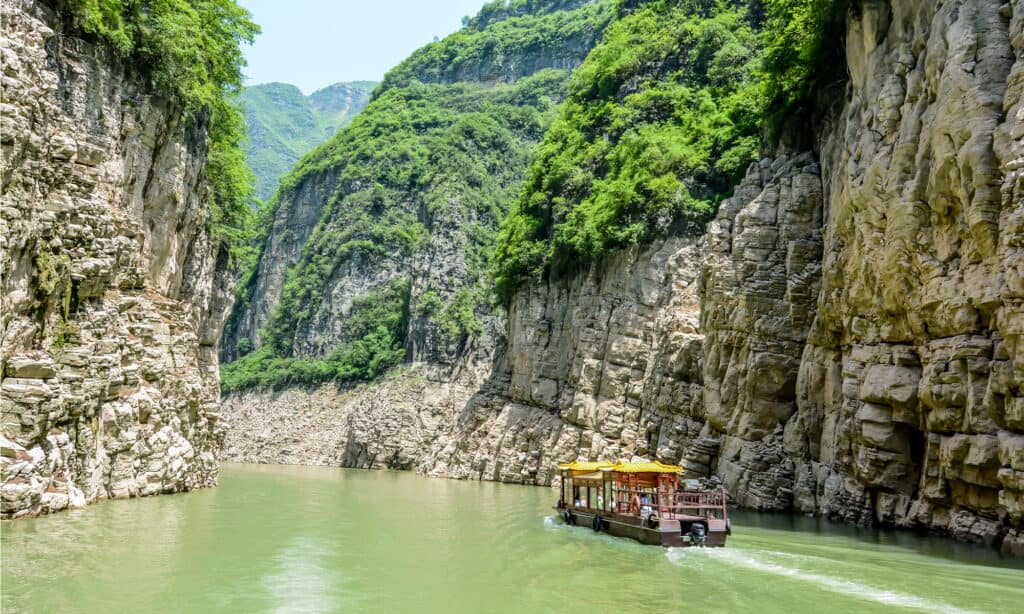
The Yangtze River is home to several critically endangered species.
©mark stephens photography/Shutterstock.com
| Yangtze River | |
|---|---|
| Drainage area (km2) | 1,808,500 |
| Average Discharge (m³/s) | 30,146 |
| Length | 3,917 miles (6,304 km) |
| Depth | 650 feet (198 m) |
| Outflow | East China Sea, Pacific Ocean |
The Yangtze River is China’s principal waterway. It is the third-longest in the world and the longest in Asia. Unlike other rivers, the Yangtze River flows entirely within China. It flows through China’s nine provinces and drains an area of 1,808,500 square km (698,265 square miles). Its basin is China’s massive granary and contains about one-third of the national population. The river has over 700 tributaries.
The Yangtze River is home to several critically endangered species, such as the giant salamander, the Yangtze giant softshell turtle, the Chinese alligator, the Yangtze river dolphin, and the narrow-ridged finless porpoise. Aside from the United States, the Yangtze River is the only place native to alligator and paddlefish species.
8. Río de la Plata River
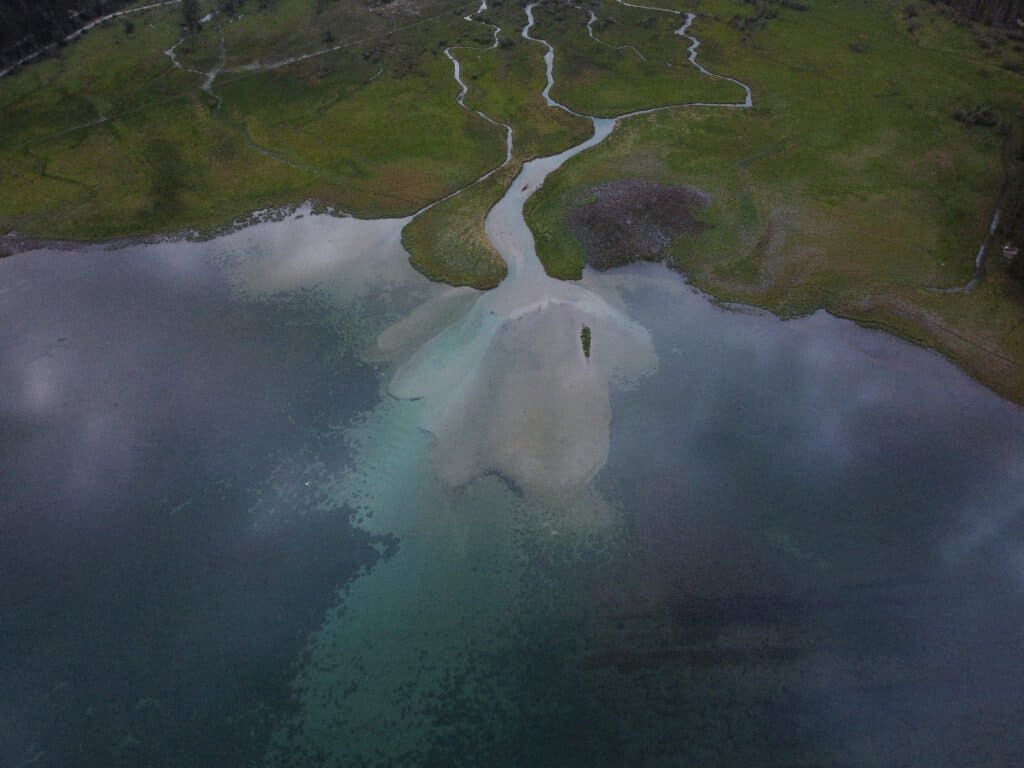
Río de la Plata River forms a distinct funnel-shaped indentation on the southeastern coastline of South America.
©Wirestock Creators/Shutterstock.com
| Río de la Plata River | |
|---|---|
| Drainage area (km2) | 3,182,064 |
| Average Discharge (m³/s) | 27,225 |
| Length | 3,030 miles (4,876 km) |
| Depth | Inner fluvial zone- 3.3 to 16.4 ft (1 to 5 m) Outer estuary zone- 16 to 82 ft (5 to 25 m) |
| Outflow | Atlantic Ocean |
Also known as the River Plate in British English, the Río de la Plata is the estuary formed by the confluence of Paraná River and Uruguay River at Punta Gorda. This river forms a distinct funnel-shaped indentation on the southeastern coastline of South America. It’s one of the most extensive rivers in the world, with an average width of 140 miles (220 km). The Rio de la Plata provides a habitat for the La Plata dolphin, leatherback sea turtle, loggerhead sea turtle, and numerous fish species.
9. Brahmaputra River
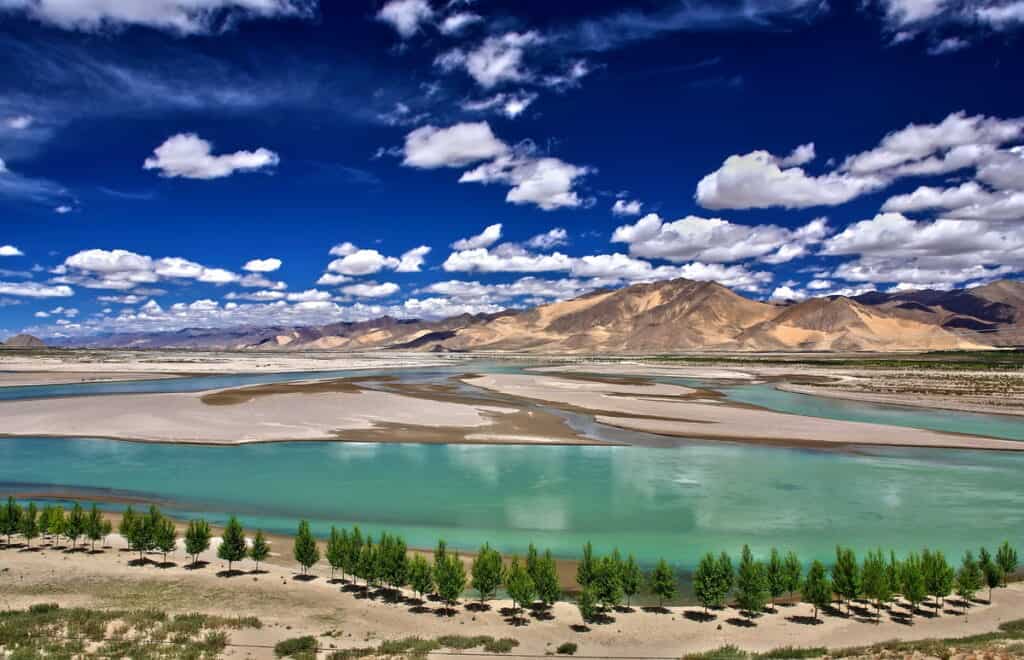
The Brahmaputra River is among the top ten most prominent rivers in the world by volume.
©Boqiang Liao from Athens,Ohio , US / Creative Commons – License
| Brahmaputra River | |
|---|---|
| Drainage area (km2) | 651,334 |
| Average Discharge (m³/s) | 19,824 |
| Length | 2,466 miles (3,969 km) |
| Depth | 100 feet (30 m) |
| Outflow | Ganges (Padma) |
The Brahmaputra is a transboundary river that flows through Bangladesh, India, and Tibet. It is also known as Luit in Assamese, Dihang/Siang River in Arunachal Pradesh, and Yarlung Tsangpo in Tibet.
With an average discharge of 19,824 m³/s, the Brahmaputra is among the top ten most prominent rivers in the world by volume. It’s a vital river for irrigation and transportation in the region. Millions of Indian and Bangladeshi citizens rely on the river. About 600,000 people live on the riverine islands, and 130 million reside in the river delta.
10. Yenisei River
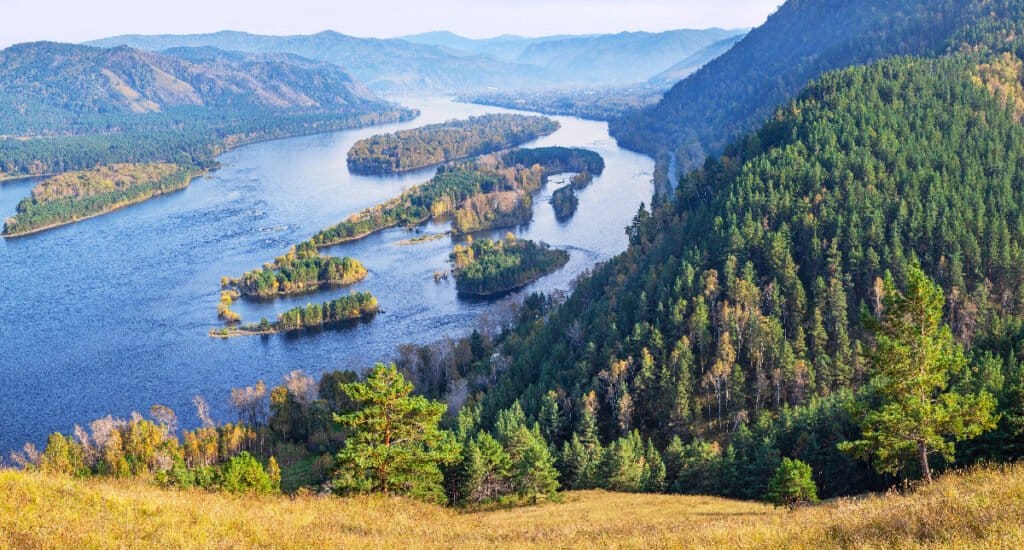
Yenisei River rises from Mungaragiyn-gol in Mongolia, follows the northerly course, and drains into the Yenisei Gulf in the Kara Sea.
©Valerii_M/Shutterstock.com
| Yenisei River | |
|---|---|
| Drainage area (km2) | 2,580,000 |
| Average Discharge (m³/s) | 19,800 |
| Length | 3,445 miles (5,544 km) |
| Depth | 45-80 feet (14-24 m) |
| Outflow | Kara Sea, Arctic Ocean |
The Yenisei River, also known as Jenisej, Enisei, or Yenisey, is the fifth-longest river on the planet. It’s also among the largest rivers in the world by volume. The river rises from Mungaragiyn-gol in Mongolia, follows the northerly course, and drains into the Yenisei Gulf in the Kara Sea. Excluding the lakes of the Khantakya headquarters and Lake Baikal, the Yenisei basin is home to 55 native fish species, including graylings. Numerous birds, such as the hooded crow, are also present in the watershed.
Summary of the 10 Largest Rivers in the World by Volume
| Rank | River Name | Average Discharge (m³/s) |
|---|---|---|
| 1 | Amazon River | 209,000 |
| 2 | Congo River | 41,000 |
| 3 | Ganges River | 38,129 |
| 4 | Orinoco River | 37,740 |
| 5 | Rio Negro/Guainia | 35,943 |
| 6 | Madeira River | 31,200 |
| 7 | Yangtze River | 30,146 |
| 8 | Rio de la Plata | 27,225 |
| 9 | Brahmaputra | 19,824 |
| 10 | Yenisei | 19,800 |
The photo featured at the top of this post is © mark stephens photography/Shutterstock.com
Thank you for reading! Have some feedback for us? Contact the AZ Animals editorial team.



